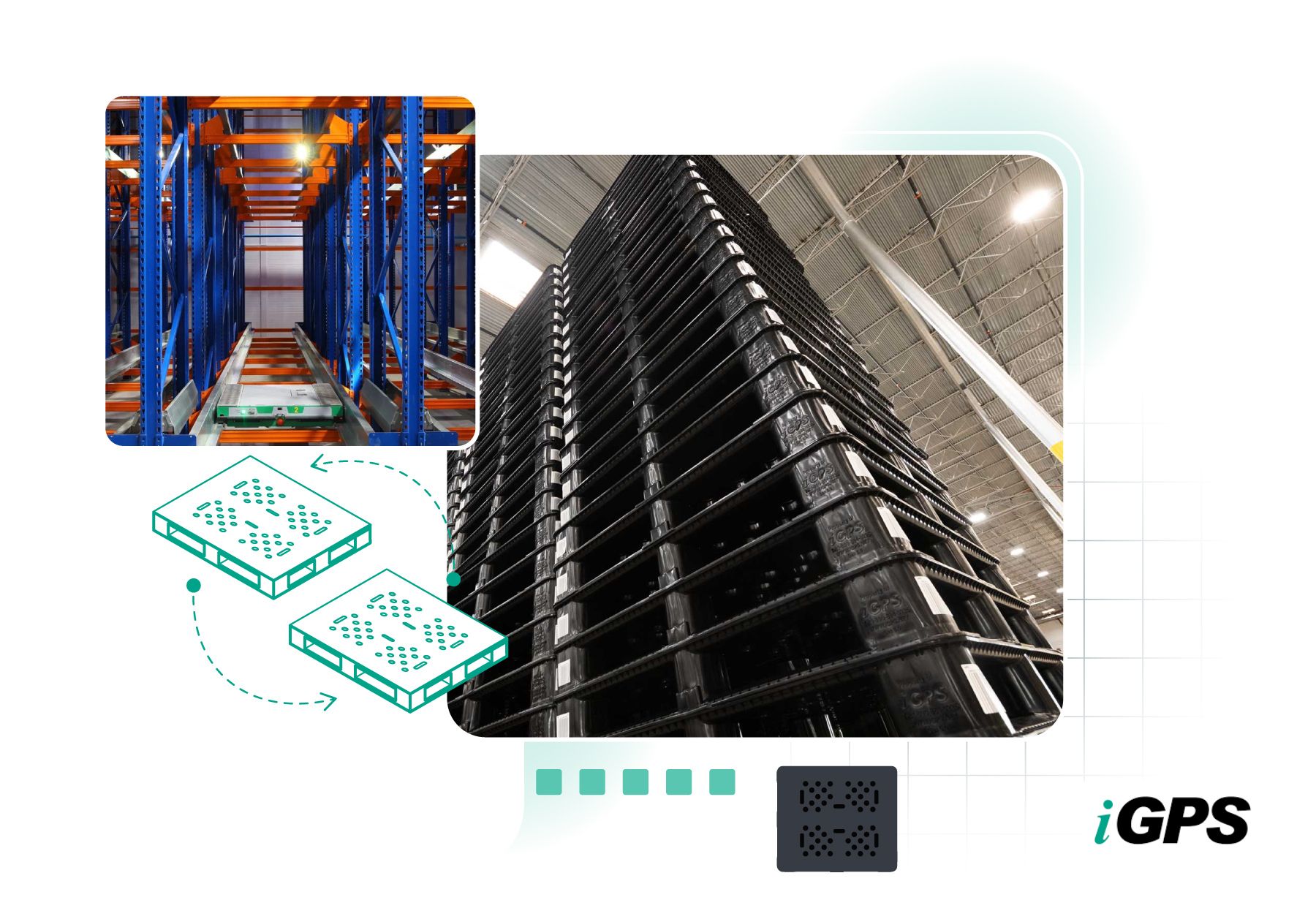Key Takeaways
- Agile warehouse management is essential for modern warehouse management.
- Real-time inventory tracking, automated picking systems, and dynamic order routing enable agile warehouses reduce delivery times and order processing. Faster deliveries.
- Agile operations eliminate bottlenecks, optimize labor, and adapt warehouse layouts to changing demands, which increase competitiveness and scalability for business.
- Product waste is significantly reduced with agile practices, notably through accurate inventory reporting, improved product traceability, and environmental controls.
The global supply chain landscape continues to evolve with increased complexity and accelerated frequency. Yet, a defining characteristic of successful warehouse management has—agility. Traditional static warehouse systems are being replaced by more dynamic, responsive, and tech-integrated approaches. Agile warehouse management is no longer a competitive advantage but, rather, a necessity.
What is Agility in Warehouse Management?
Agility in warehouse management reflects the ability of a warehouse operation to rapidly adapt to changes, for example in evolving customer expectations, demand, supply disruptions, and technical disruptions. It emphasizes flexibility, responsiveness, and real-time decision-making powered by data and smart technologies.
Agile warehouses are characterized by:
- Adaptive workflows
- Collaboration across departments and supply chain partners
- Continuous improvement cycles
- Integration of automation and AI
- Scalable operations
The objective is to develop a responsive warehouse that can pivot quickly in response to market volatility, ensuring that the broader supply chain remains uninterrupted and efficient.
The Benefits of Agile Warehouse Management
The benefits of adopting an agile approach in warehouse operations are significant and can impact the entire supply chain. Agility offers both strategic and operational advantages, from faster deliveries to cost reductions, among others.
Quicker Time to Consumer
The rise of e-commerce and same-day delivery models have substantially changed consumer expectations. Notably, agile warehouses play an integral role in accelerating the time it takes products to reach end customers.
Key contributors include:
- Real-time inventory visibility: Agile systems use IoT and RFID technology to keep track of stock in real time, reducing search time and improving pick accuracy.
- Dynamic routing: Orders can be fulfilled from the most optimal location, reducing delivery times.
- Automated picking systems: Robots and pick-to-light technologies minimize manual labor and speed up the order fulfillment process.
By reducing processing times and optimizing delivery logistics, agile warehouses help businesses meet the growing demand for rapid order fulfillment.
More Efficient Operations
Efficiency lies at the core of agility. Agile warehouses are purposefully designed to reduce bottlenecks, eliminate redundancies, and ensure optimal resource use.
Efficiencies are achieved through:
- Advanced Warehouse Management Systems (WMS): These systems provide real-time data and analytics for smarter decision-making.
- Workforce optimization: Through data-driven labor planning and task assignment, worker productivity is maximized.
- Layout optimization: Agile operations often include flexible storage configurations that adapt to product mix changes and seasonal variations.
This efficiency not only improves throughput but also directly lowers operational costs, making the business more competitive and scalable.
Less Wastage of Products
Product wastage due to damage, expiration, or obsolescence can significantly erode margins as seen in sectors like food, pharmaceuticals, and fast fashion. Agile warehouse management mitigates these risks building upon improved operational efficiencies.
Here’s how:
- Just-in-time inventory: Maintaining lower, more accurate stock levels reduces the chances of overstocking and obsolescence.
- Enhanced traceability: Using barcode scanning and IoT devices, warehouses can track items precisely, ensuring older inventory is dispatched first (FIFO).
- Environmental controls: Agile systems monitor storage conditions to prevent spoilage, especially for temperature-sensitive goods.
Reducing waste not only improves profitability but also supports sustainability goals—an increasingly important metric for modern businesses.
- Future-Proofing the Supply Chain
“Future-proofing” the supply chain against disruption can be considered the most strategic benefit of agile warehouse management. As seen with recent geopolitical issues, global pandemics, or sudden shifts in demand, agile operations can adapt and overcome challenges more successfully than traditional systems.
Agility helps future-proof supply chains by:
- Improving responsiveness to disruptions: Real-time data enables immediate responses to supplier delays or shifts in consumer behavior.
- Supporting omnichannel fulfillment: Agile warehouses can quickly pivot between retail, e-commerce, and B2B fulfillment.
- Embracing automation and AI: Investing in future-ready technology lays the groundwork for long-term resilience.
Businesses with agile warehouses can innovate faster, scale efficiently, and adapt quickly, ensuring long-term competitiveness.
How to Achieve Agile Warehouse Management?
The transition to agile warehouse management requires more than the adoption of new technology—a cultural and structural transformation must also occur. Below are the key steps to achieve agility in warehouse operations:
Invest in Technology and Automation
Dynamic agile warehouses leverage a tech stack that includes:
- Warehouse Management Systems (WMS)
- Internet of Things (IoT) sensors
- Robotics and automation for picking, packing, and sorting
- Artificial Intelligence and machine learning for forecasting
These tools provide real-time insights and streamline physical operations.
Redesign Warehouse Layouts
Configurable storage zones, mobile racks, and modular shelving provide flexibility to enable quick adjustments to product changes or volume. Notably, flow optimization ensures smooth movement of good that can reduce congestion and downtime.
Empower Workforce
Agile warehouse management requires an agile workforce, characteristically cross-functional and empowered to make decisions.
Modular shelving, mobile racks, and allow for quick adjustments to volume or product changes. Flow optimization ensures smooth movement of goods, reducing congestion and downtime.
Improve Visibility and Communication
Integrated systems—across customer service, inventory, procurement, and transportation—ensure that the entire supply chain has critical access to accurate information. Both APIs and cloud platforms play a crucial role to facilitate seamless data flow.
Embrace Data-Driven Decision Making
Predictive analytics to anticipate trends and react before issues arise is vital feature in agile warehouses. Data derived from customer orders, external sources, and sensors can be used to forecast demand, optimize labor allocation, and prevent stockouts.
Establish Collaborative Supplier Relationships
Agility should not be confined to the warehouse. Close collaboration with suppliers on demand planning, replenishment strategies, and forecasting enables synchronized operations and reduces delays.
Frequently Asked Questions
What is agile warehouse management, and why is it important?
Agile warehouse management refers to a dynamic and responsive approach to managing warehouse operations, emphasizing flexibility, real-time decision-making, and the integration of smart technologies like automation, AI, and IoT. It is important because it enables warehouses to quickly adapt to shifting customer demands, supply chain disruptions, and technological changes, ensuring more resilient and efficient operations.
How does agile warehouse management improve delivery speed to consumers?
Agile warehouse management enhances delivery speed by utilizing real-time inventory visibility, automated picking systems, and dynamic routing. These tools and processes reduce processing times, allow for faster order fulfillment, and ensure that products are dispatched from the most optimal location—helping businesses meet rising consumer expectations for same-day and next-day deliveries.
In what ways does agility increase warehouse efficiency?
Agility boosts warehouse efficiency by streamlining operations through advanced warehouse management systems (WMS), optimizing workforce allocation, and using adaptable layouts that accommodate product changes. These measures help eliminate bottlenecks, reduce labor inefficiencies, and improve throughput, all while lowering operational costs and increasing scalability.
Can agile warehouse management help reduce product waste?
Yes, agile warehouse management significantly reduces product waste. By implementing just-in-time inventory strategies, enhancing traceability through IoT and barcodes, and monitoring environmental conditions, warehouses can prevent overstocking, spoilage, and product obsolescence. This is especially crucial in industries with perishable or fast-moving products, such as food, pharmaceuticals, and fashion.
Companies striving to optimize their supply chain operations and control costs depend on durable, lightweight iGPS plastic pallets for all their shipping needs. For more information, contact us at 1-800-884-0225, email a specialist at switch@igps.net, or visit our contact page.



